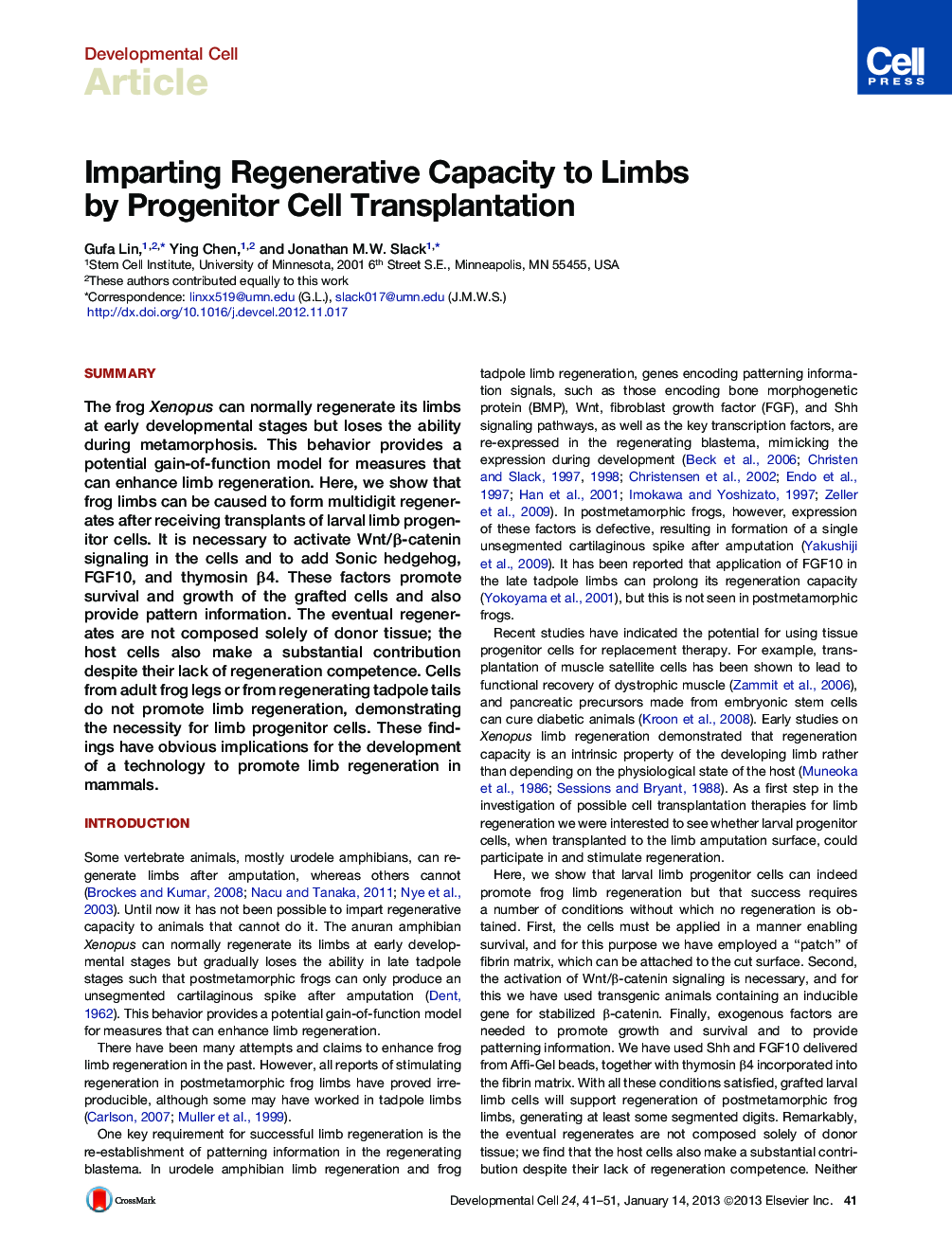| Article ID | Journal | Published Year | Pages | File Type |
|---|---|---|---|---|
| 2176897 | Developmental Cell | 2013 | 11 Pages |
SummaryThe frog Xenopus can normally regenerate its limbs at early developmental stages but loses the ability during metamorphosis. This behavior provides a potential gain-of-function model for measures that can enhance limb regeneration. Here, we show that frog limbs can be caused to form multidigit regenerates after receiving transplants of larval limb progenitor cells. It is necessary to activate Wnt/β-catenin signaling in the cells and to add Sonic hedgehog, FGF10, and thymosin β4. These factors promote survival and growth of the grafted cells and also provide pattern information. The eventual regenerates are not composed solely of donor tissue; the host cells also make a substantial contribution despite their lack of regeneration competence. Cells from adult frog legs or from regenerating tadpole tails do not promote limb regeneration, demonstrating the necessity for limb progenitor cells. These findings have obvious implications for the development of a technology to promote limb regeneration in mammals.
Graphical AbstractFigure optionsDownload full-size imageDownload high-quality image (101 K)Download as PowerPoint slideHighlights► Transplantation of limb progenitor cells promotes multiple digit regenerates ► Wnt/β-catenin activation is required to stimulate adult frog limb regeneration ► Growth factors promote cell survival and growth and give pattern information ► Regeneration-incompetent host limb cells contribute to the regenerated limbs
